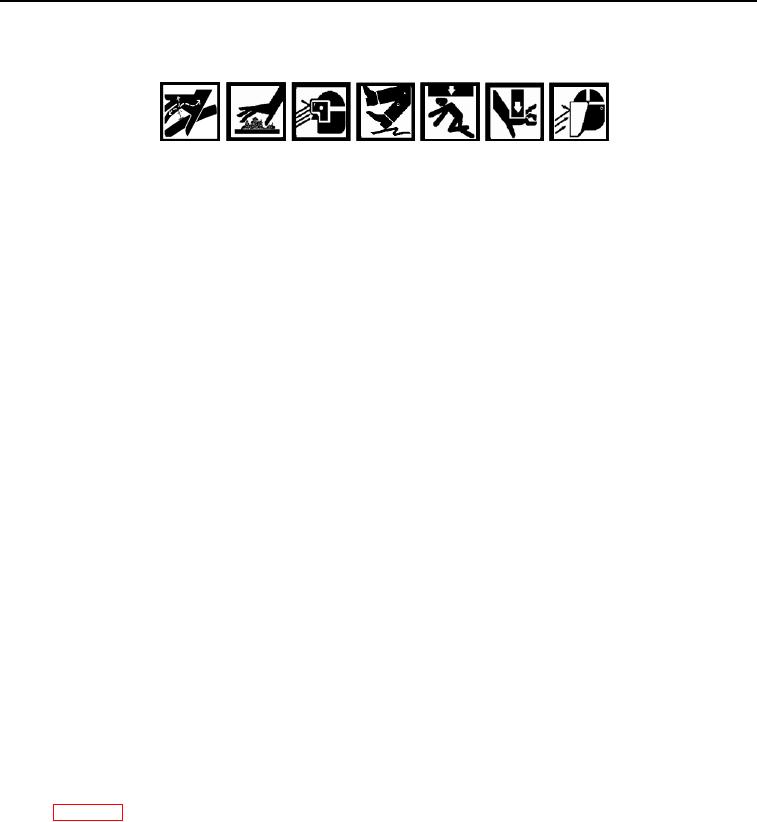
TM 5-2410-240-23-1
0031
MOTOR CONTROL SOLENOID VALVE INITIATION SET SCREW - ADJUST
00031
WARN I N G
DO NOT disconnect or remove any hydraulic system hoses, tubes, or fittings unless
engine is shut down and hydraulic system pressure has been relieved. Tighten all
connections before applying pressure. Escaping hydraulic fluid under pressure can
penetrate skin.
At operating temperature, hydraulic oil is hot.Allow hydraulic oil to cool before removing
any hydraulic fitting.
Wear protective eye covering and gloves.
Lubricating/hydraulic oils used in performa ce of maintenance can be very slippery.
n
Immediately wipe up any spills.
Use extreme caution when handling heavy parts. Provide adequate support and use
assistance during procedure.
Failure to follow these warnings may result in injury or death to personnel.
C AU T I O N
Wipe area clean around hydraulic system, and cap all hydraulic hose ends along with
component connections during removal to protect against contamination. Failure to follow
this caution may cause damage to equipment.
Hydrostatic drive motors are mounted inboard of final drive and parking brake units. Motors are variable
displacement piston motors, which can turn in either direction. The direction and rate of motor rotation determines
direction and speed in which machine will travel. High-pressure oil from hydrostatic pumps turns the drive motors.
The hydrostatic drive motor (displacement) control valve and solenoid in motor control motor speed.
When machine ECM sends a signal to hydrostatic drive motor control valve solenoid, the solenoid overcomes the
force of a spring and a valve moves. As valve moves, regulated oil pressure flows into motor's pistons, causing
motor to turn.
A set screw within hydrostatic drive motor control valve solenoid is used to set solenoid initiation current. This set
point allows for variation in motors to prevent unwanted momentary turning, or modulation, and can be adjusted.
This calibration procedure first finds initiation current for hystat pumps, then saturation current for the pump.
Saturation current is the current when pumps are at maximum displacement. Next the calibration will find initiation
current for motors. The current for two motors will rise together until machine ECM detects a 5 RPM increase in
motor speed of one motor. At this point, motor begins to destroke, and machine ECM will store this initiation
current. Machine ECM will then increase current for other motor until machine ECM detects a 5 RPM increase in
motor speed, and current will be stored.
Refer to WP 0007 for detailed description of Hydrostatic Drive Motor and Hydrostatic Drive Motor (Displacement)
Control Valve.
0031-33

